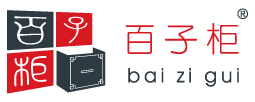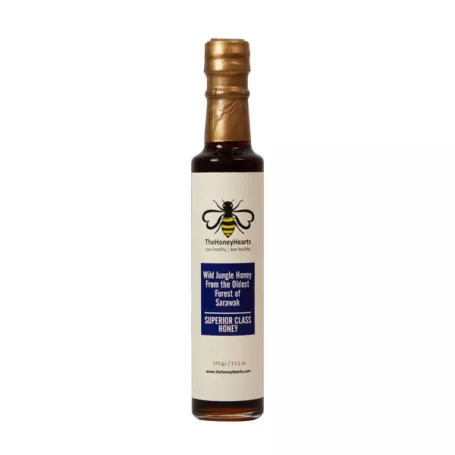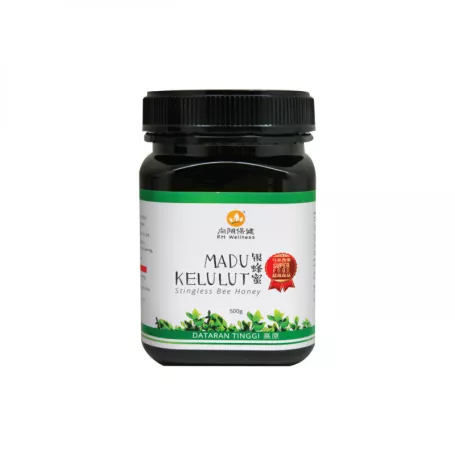How to Determine If Honey Is Real and Pure : 5 Methods I Bai Zi Gui

Bees collect nectar from various flowers and bring it back to the hive, where they add a variety of active enzymes secreted by themselves to transform the nectar into honey. As a result, natural honey is highly favored as an agricultural product. However, many consumers, due to limited knowledge about honey, find it challenging to distinguish between real and fake honey.
We often encounter wild honey, silver honey, longan honey, various types of flower honey, and Manuka honey in the market. The price of honey in supermarkets ranges from tens to hundreds of ringgit.
With so many types of honey, how are they categorized? What are the differences between them?
Approximately 90% of the honey on the market is actually synthetic or fake honey. Honey sold in supermarkets or stores is often a mixture of fructose syrup, artificial flavors, and colorants. Therefore, unprocessed raw flower nectar is more desirable.
According to Traditional Chinese Medicine (TCM), honey has functions such as tonifying the middle and benefiting qi, moistening the lungs and relieving coughs, and detoxifying. Pure honey is widely used in Chinese medicine formulas and has high medicinal value. TCM holds that honey is sweet, neutral, and enters the spleen, lung, and large intestine meridians. Its main functions include:
Tonifying the Middle and Benefiting Qi: It has a significant restorative effect on those with weak spleen and stomach, shortness of breath, and fatigue.
Moistening the Lungs and Relieving Coughs: Suitable for symptoms such as dry cough and throat discomfort.
Detoxifying: Can alleviate drug toxicity, food poisoning, and other conditions.
Definition of Fake Honey
Fake honey refers to products that have been artificially processed, often containing syrup, artificial flavors, and colorants, or even made entirely from synthetic ingredients rather than real honey.
Causes of Fake Honey
Low Cost: Producing fake honey is much cheaper than producing real honey.
Profit Motivation: To achieve higher profits, some sellers opt to produce and sell fake honey.
Market Demand: With high demand for honey and insufficient supply, fake honey finds its way into the market.
Dangers of Fake Honey
Fake honey lacks the nutritional and medicinal value of real honey and may contain harmful substances that pose a potential health risk.
How to Choose Quality Honey
To ensure you are buying high-quality honey, consider the following:
Appearance and Color: Real honey is usually cloudy due to the presence of pollen, while fake honey is more transparent. The color of honey can vary depending on the source and fermentation level, so color alone is not a reliable indicator of authenticity.
Label: Check the protein content on the label. Real honey contains pollen which has 20-40% protein. If there is no protein, the honey may be fake.
Smell: Pure natural honey will have a floral aroma, while fake honey may only taste sweet without any aroma.
Surface Foam: Real honey may appear slightly cloudy and have sediment at the bottom, with foam on the surface.
Techniques to Distinguish Honey:
Taste: Pure natural honey will have a subtle floral aroma, while fake honey lacks this floral note.
Bubbles: Mix honey with water and shake. If bubbles persist, the honey is likely pure. Rapidly disappearing bubbles may indicate added flavors.
Clarity: Honey containing pollen appears slightly cloudy, while syrup honey is clearer.
FAQs:
Does Pure Honey Crystallize?
Honey with high fructose and glucose content can crystallize under certain conditions. Crystallization does not mean honey has gone bad.
How to Store Honey?
Regular honey should be kept at room temperature away from direct sunlight. Stingless Bee honey should be refrigerated to slow fermentation. Fermented honey turns into alcohol and vinegar, making it sour.
Simple Methods to Test Honey Authenticity?
Tests like the flame test and paper towel test can help determine honey's authenticity.
Does Honey Price Reflect Quality?
Generally, high-quality honey is more expensive. Cheap honey may have quality issues.
Do Honey Color and Taste Change with Floral Source?
Yes, honey's color and taste vary depending on its floral source. This is a natural characteristic and does not affect its nutritional value.
Do you What is Stingless Bee?
Stingless bees are small, stingless bees that produce honey with finer, higher-quality pollen. Stingless bees honey is rich in enzymes and has higher nutritional value, highly valued by Malay communities and indigenous people. Recognized as a superfood by the Malaysian Agricultural Department, it contains over 180 active nutrients and ten times more antioxidants than regular honey. Its unique taste is due to natural fermentation and is difficult to replicate.
How to Choose Stingless bees :
Natural Fermentation: Silver honey is stored in beehive containers where it ferments with the nutrients from bee resin, resulting in high antioxidants and antibacterial phenolic acids.
Lactic Acid Bacteria Content: Silver honey contains four times the lactic acid bacteria of regular honey, which helps improve gut function and boost immunity.
Limited Production: Only 300-500 grams are produced monthly, making it rare and highly nutritious.
RH Wellness Sdn Bhd
As one of the largest silver bee farming enterprises in the country, RH Wellness Sdn Bhd operates in pristine tropical rainforests. We ensure honey is harvested from uncontaminated sources, filtered using simple physical methods, and processed at low temperatures to maintain purity, maturity, and concentration. Rh Wellness is committed to providing high-quality stingless bee products and holds MeSTI and halal certifications.

 Bahasa melayu
Bahasa melayu 中文
中文
























